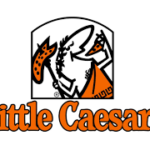Introduction
When it comes to determining the value of a vehicle, few resources are as trusted as Kelley Blue Book (KBB). For decades, this guide has been the go-to source for consumers, dealers, and automotive professionals alike. Whether you’re buying, selling, or trading in a car, Kelley Blue Book provides a reliable benchmark to ensure you’re getting a fair deal. In this article, we will explore the history, significance, and methodology behind Kelley Blue Book, and how you can effectively use it to make informed decisions in the automotive market.
The History of Kelley Blue Book
From Humble Beginnings to Industry Leader
Kelley Blue Book was founded in 1926 by Les Kelley, a car dealer in Los Angeles. Initially, it was a list of vehicles that Kelley was willing to buy and sell along with their prices. The guide quickly gained popularity, and by the 1940s, it had become a staple in the automotive industry. Over the years, KBB evolved from a simple price list into a comprehensive resource that includes a wide range of vehicles, from new to used cars, and even motorcycles and RVs.
The Evolution of KBB in the Digital Age
With the advent of the internet, Kelley Blue Book expanded its reach by launching a website in 1995. This move made it easier for consumers to access up-to-date vehicle valuations online. Today, KBB’s website is a robust platform that offers a variety of tools and resources, including price calculators, car reviews, and advice for both buyers and sellers. The digital transition has solidified Kelley Blue Book’s position as the most reliable and widely used vehicle valuation guide in the United States.
How Kelley Blue Book Determines Vehicle Value
A Comprehensive Valuation Process
Kelley Blue Book uses a proprietary algorithm to determine the value of a vehicle. This algorithm takes into account various factors, including the car’s make, model, year, mileage, condition, and location. The data is collected from a wide range of sources, such as auctions, dealership transactions, and private sales. KBB then compiles this data to provide a fair market range for each vehicle.
The Importance of Condition and Mileage
Two of the most critical factors that affect a car’s value in Kelley Blue are its condition and mileage. KBB categorizes conditions into four levels: Excellent, Very Good, Good, and Fair. A car in Excellent condition will have minimal wear and tear, while one in Fair condition may require significant repairs. Mileage also plays a crucial role; the lower the mileage, the higher the car’s value. Kelley Blue adjusts its valuations based on these factors to provide an accurate estimate.
Regional Adjustments
Kelley Blue Book also considers regional variations in vehicle values. For example, a convertible may be worth more in sunny California than in a colder state like Minnesota. KBB’s valuation system accounts for these regional differences to ensure that the pricing reflects the local market conditions.
Using Kelley Blue Book to Buy a Car
Research and Comparison
If you’re in the market for a new or used car, Kelley Blue Book is an invaluable resource. Start by researching the make and model you’re interested in. KBB provides detailed reviews, including information on performance, safety, and fuel efficiency. You can also compare different vehicles side by side to see which one offers the best value for your budget.
Understanding Fair Purchase Price
One of the most useful features of Kelley Blue Book is the Fair Purchase Price tool. This tool shows you what others have paid for the same vehicle in your area, giving you a realistic expectation of what you should pay. The Fair Purchase Price is based on actual transaction data, making it a more reliable indicator than the Manufacturer’s Suggested Retail Price (MSRP).
Negotiating with Confidence
Armed with the information from Kelley Blue Book, you can negotiate with confidence when buying a car. Knowing the fair market value of a vehicle gives you leverage in negotiations, whether you’re buying from a dealership or a private seller. You can avoid overpaying by sticking to the price range suggested by KBB.
Using Kelley Blue Book to Sell or Trade In a Car
Determining Your Car’s Value
Before selling or trading in your car, it’s essential to know its value. Kelley Blue Book offers a tool called the Trade-In Value, which gives you an estimate of what you can expect to receive from a dealer. This value is typically lower than the Private Party Value, which is what you might get if you sell the car directly to another individual.
Maximizing Your Car’s Value
To get the best price for your car, make sure it’s in good condition. Minor repairs, a thorough cleaning, and proper maintenance can significantly increase your car’s value. Kelley Blue Book’s valuation considers the condition of the car, so presenting your vehicle in the best possible shape can lead to a higher offer from buyers or dealers.
Understanding the Trade-In Process
Trading in a car can be a convenient option, especially if you’re purchasing a new vehicle from the same dealer. Kelley Blue Book’s Trade-In Value gives you a good starting point for negotiations. Keep in mind that dealers may offer less than the KBB value, as they need to make a profit when reselling the car. However, by knowing the KBB value, you can ensure that you’re not being undercut.

The Future of Kelley Blue Book
Adapting to Market Changes
As the automotive industry continues to evolve, Kelley Blue Book is also adapting to stay relevant. With the rise of electric vehicles (EVs) and autonomous driving technology, KBB is expanding its resources to include information on these emerging trends. The company is also incorporating more data on vehicle safety features, fuel efficiency, and total cost of ownership to provide a more comprehensive valuation.
KBB and the Shift to Online Car Buying
The shift to online car buying has been accelerated by the COVID-19 pandemic, and Kelley Blue Book has been at the forefront of this change. KBB’s website now offers tools that allow consumers to complete almost the entire car-buying process online, from researching vehicles to getting financing options. This convenience is likely to make KBB an even more integral part of the car-buying process in the future.
Conclusion
Kelley Blue Book remains a trusted and essential resource for anyone involved in the automotive market. Whether you’re buying, selling, or trading in a vehicle, KBB provides the information you need to make informed decisions. By understanding how Kelley Blue Book determines vehicle values and how to use its tools effectively, you can ensure that you’re getting the best possible deal. As the automotive industry continues to evolve, Kelley Blue Book is poised to remain at the cutting edge, providing consumers with reliable, up-to-date information for all their vehicle valuation needs.







